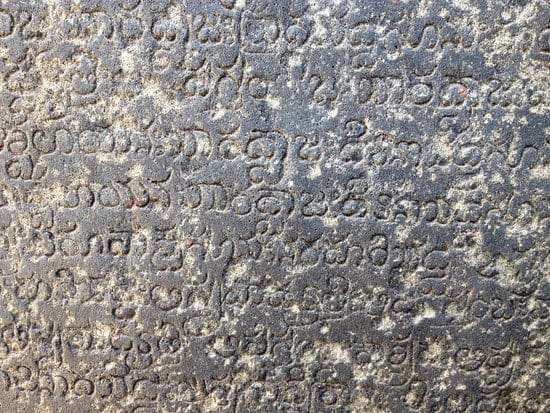
Kannada is one of the ancient Indian languages. Old Kannada can be traced to the oldest 5th-century inscription of Halmidi and the earliest 9th-century literary works, “Kavirajamarga” and “Vaddaradhane.” There is no doubt that Kannada language and literature had taken a clear direction in its development by the time of Badami and Sravanabelagola inscriptions. By then, Kannada language and literature had reached a definite milestone.
Having grown with the influence of two very ancient languages, Prakrit and Sanskrit, by the time of the 6th century, it had begun to take a clear and independent shape as a language of merit. Based on the available records, the literature before this period has been identified as ‘Poorva Halegannada’ or the ‘Pre-Old Kannada.’ Kannada literary scholars have identified the literature of the subsequent phase from the middle of the 6th century to the 12th century as ‘Halegannada’ or ‘Old Kannada.’ Even in Old Kannada, we can see the influence made by Pre-Old Kannada. Some of the words of Pre-Old Kannada have been used in the subsequent ‘Old Kannada.’ They have retained the traces of ‘Pre-Old Kannada.’
The first available Kannada literary work, ‘Kavirajamarga,’ is based on the Sanskrit classic of the poet ‘Dhandi.’ It is a work on poetics. Besides mentioning the names of some early writers in prose and poetry, the author has also used the word ‘Palegannada’ (Old Kannada). This is clear evidence that literary creation in Kannada had taken place earlier to the ‘Kavirajamarga’ period. The same tradition continues even afterward. Pampa, Ponna, and Ranna emerge as three literary diamonds of Old Kannada in the 10th century.
Right from the earliest poet ‘Pampa,’ the ‘Adi Kavi’ or the earliest poet of Kannada, till the 12th century, we see all the poets have produced their work in ‘Old Kannada’ itself. They have created their works in the same old ‘Champu’ pattern, a mixture of prose and poetry, blazing a new trial. If the Kannada’s earliest poet Pampa has produced such an excellent work like ‘Adipurana,’ there can be no doubt that Kannada language and literature had developed substantially by then under the creative abilities of old Kannada poets.
Writing about the unique qualities of ‘Old Kannada,’ Kannada’s veteran scholar R Narasimhachar says, “Halagannaada is quite uniform and shows an extraordinary amount of polish and refinement. It has, to the present time, been preserved in several works written mostly by Jaina scholars and appears to have been in common use for literary purposes from about at least the 10th to the middle of the 13th century. Its principal characteristics are the elaborate and highly artificial Champu composition…”
Aware of the excellent characteristics of the Champu pattern, many Kannada writers, even after the 12th century, have preserved and continued to make use of this style of writing. They have produced some excellent works in this elegant and rich classical style. Their rich poetical works in Champu style have remained as examples of the ‘Old Kannada’ tradition in vogue from the earliest times of the Kannada literature.

Be the first to comment